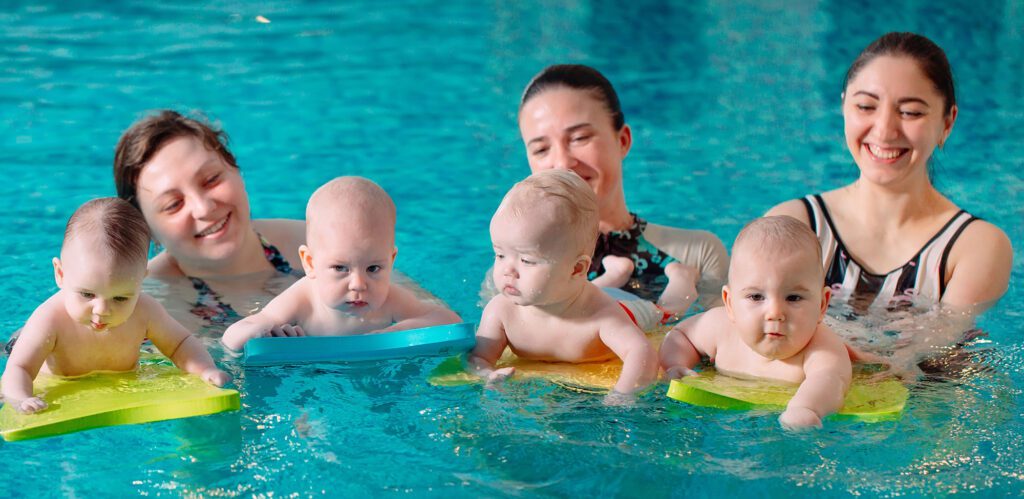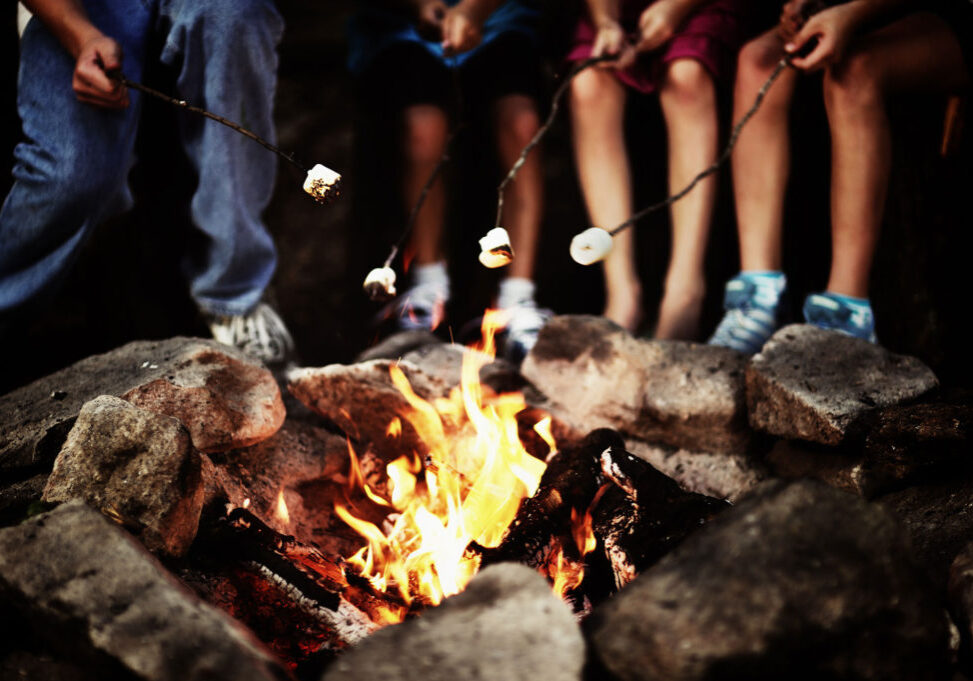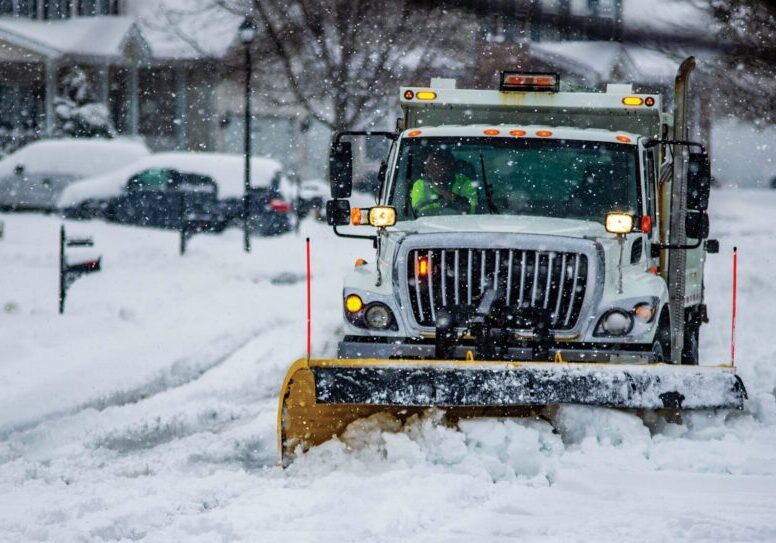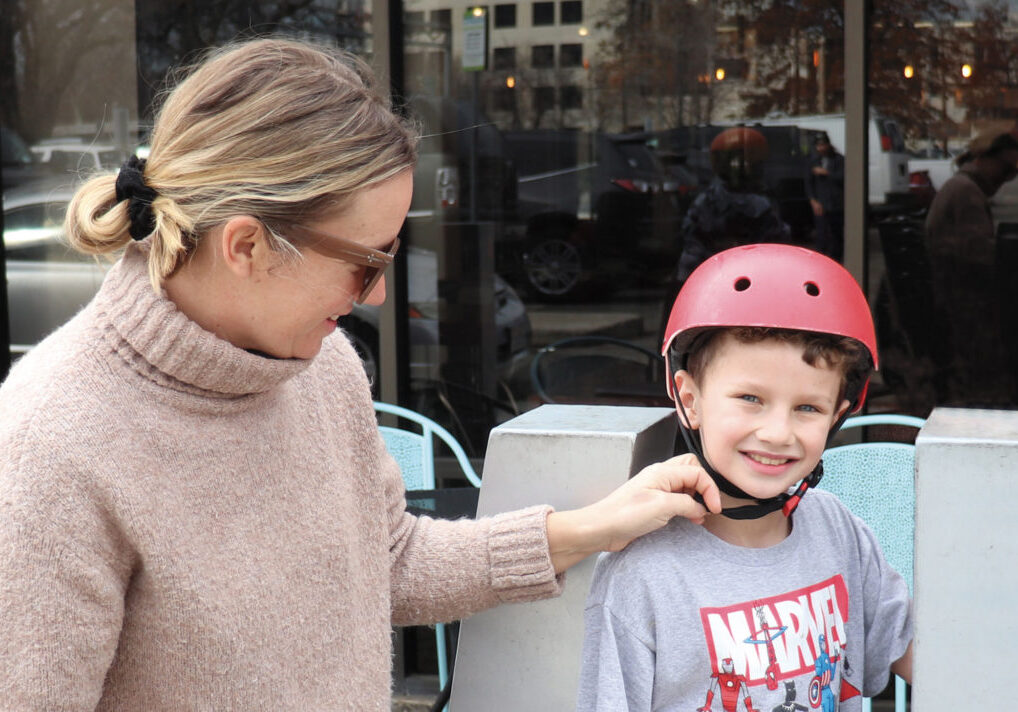I heard just the quietest little “plip.” I was pregnant with my second child and standing in our above-ground pool, letting the water buoy my enormous belly and relieving my aching back. My 18-month-old son was toddling around on the pool deck and I was standing right at the edge of the pool next to the deck watching him. I can’t remember why I turned away, (it was almost 40 years ago), but I remember turning my head and the next second I heard a quiet little plip, almost unnoticeable, but I turned my head right back around to see my baby boy upside down in the pool, his diaper keeping his little legs up in the air. I grabbed him and pulled him out before he could take in a lung-full of water. My heart was pounding. Not even two seconds of inattention and my baby was in the water – quietly, almost without a warning sound.
Drowning is the leading cause of injury-related death among children between one and four years old and the third leading cause of unintentional injury-related death among children 19 and under. Children less than a year old are more likely to drown at home in the bathtub or a bucket. Angie Baker, director at Sun Oaks Swim School and founder of Water Safe Shasta, a nonprofit organization that promotes water safety for children, emphasizes, “you should always be aware when water is there.”
We are surrounded by water features here in the North State. Families seeking respite from the heat flock to local rivers and lakes every summer to cool off and enjoy our scenic waterways. But as Mindy Odell, certified swimming instructor at Redding ISR (reddingisr.com), says, “Water is the most dangerous playground on earth for your child. While water is fun and a great escape from the summer heat, we need to first teach our children how to be safe in and around water.”
Water safety for children and adults is crucial to keep these fun summer outings from turning into family tragedies. Here are some water safety guidelines from American Red Cross, Kids Safe Worldwide, California Department of Water Resources and KidsHealth that, if followed, can help keep your children safe while they splash about and exuberantly enjoy water play.

Swim lessons save children’s lives
First and foremost, everyone in the family should know how to swim. Adults should be able to jump in the water and swim to save a drowning child. Children should know how to swim in water that is deeper than they are tall. Local YMCAs provide low-cost swim lessons year-round in heated indoor pools. Adults can take water rescue courses in which they learn how to rescue adults and children who are in distress in the water.
Learn CPR and basic water rescue skills
It is important to know how to respond in an emergency without putting yourself at risk. The American Red Cross offers courses in CPR, First Aid and AED (automatic emergency defibrillators). These skills are easy to learn and are offered in-person, online and a blend of both to meet every need and fit into busy schedules.
Safe water habits are learned early
Learning water safety habits early is crucial to keeping kids safe around water. The American Red Cross has developed an online tutorial on water safety for kids. Longfellow the Whale helps kids to “do your part, be water smart.” Short, engaging and age-appropriate videos led by Longfellow teach important water safety topics. Each episode centers on a memorable phrase like “Swim as a Pair Near a Lifeguard’s Chair,” “Look Before You Leap” and “Think So You Don’t Sink,” to help children retain what they’ve learned. Content is designed for kindergarteners through sixth graders. Children watch the video, do the activity sheet for their age group and then take a quick three-question quiz to help them demonstrate what they’ve learned and take pride in their new knowledge.
The children’s water safety course includes a downloadable parent and caregiver guide to help adults reinforce the lessons in the videos. American Red Cross offers an online basic water safety course for parents and caregivers. Adults can also take the online “Be an Ambassador for Water Safety” course to help their community thrive by teaching kids and adults about water safety.
Water safety begins at home
Be vigilant around even small water sources at home. Children can drown in as little as one inch of water. My experience illustrates how important it is to watch children every second, without being distracted, when they are in or around water. Mindy says parents should “Require your child to hold your hand whenever they are in the pool area, just like we would in a busy parking lot or crossing a busy street. We need to treat the water just like a busy parking lot because it is statistically more dangerous.”
Other tips for home water safety:
- Empty tubs, buckets, containers and kids’ pools immediately after use. Store them upside down and out of children’s reach.
- Keep toilet lids and doors to bathrooms and laundry rooms closed when not in use.
- Install fences around home pools. A pool fence should surround all sides of the pool and be at least four feet tall with self-closing and self-latching gates.
- Get into the habit of keeping doors and gates leading to water closed even when using the pool or spa. Never prop doors or gates open.
- Keep things like chairs that children can climb on away from pool fences and gates.
- Keep children in direct sight at all times. Never leave a young child alone in or around a pool, spa, wading pool or natural water feature even for a few seconds.
- Children in water or next to water can drown immediately and silently, so there is no room for error.
- Be especially alert at the start and end of “planned” pool time for toddlers.
- If a child is missing, ALWAYS look first in the pool or spa. Seconds count!
- Keep rescue equipment (safety ring, long pole) and a phone next to the pool or spa.
- Have a professional regularly inspect your pool or spa for entrapment or entanglement hazards.
Water safety in the wild
The safety tips on the previous page should also be employed to keep kids safe while families enjoy the beautiful lakes, rivers and ponds throughout the North State. Keep these additional tips in mind:
- When swimming in lakes, reservoirs or deep ponds, wear something to protect your feet. Some ponds and lakes may hide jagged rocks, broken bottles or trash.
- Watch out for weeds and grass, which can trap even a good swimmer. If you panic and try to yank yourself free, you may get even more tangled. Instead, shake and pull your arms and legs slowly to work yourself loose and call for an adult’s help.
- When young children are in or around water, assign a “Water Watcher” to keep them in DIRECT SIGHT. Relieve the watcher every 20 minutes.
- Swim with a buddy.
- Children and adults should wear life jackets.
- Obey all hazard signs.
- Swim in safe or designated areas only and near a lifeguard.
- Beware of drop-offs into deep water.
- Watch for hidden debris, rapid currents and slippery rocks.
- Look before you leap or dive. Keep an eye out for rocks near the surface upon which you might hit your head.
- Stop swimming or boating as soon as you see or hear a storm. Remember, lightning is electricity — electricity and water are a dangerous combination.
- Don’t swim in the dark.
- Go into the water slowly to make sure the temperature feels comfortable and it’s not too cold. If you’re shivering or start to feel your muscles cramping up, it may be because the water is too cold. This is not safe, so get out of the water right away.
- Know your limits. Give kids rest breaks to keep them fresh and alert. Watch for tired, lethargic swimmers and get them out of the water to rest or nap.
- Keep kids hydrated. They may or may not be swallowing water as they swim, but they will lose water through perspiration which cannot be felt or seen when kids are in water. Dehydration can lead to fatigue and poor judgement. Take breaks to rehydrate with bottled water.
For water safety training in Shasta County, contact Water Safe Shasta, a nonprofit founded in 2022 dedicated to providing children in Shasta County water safety education and training during school hours. If schools are unable to come to the pool for swim classes, they send water safety educators to classrooms to give water safety lessons through stories, songs and activities. This May, they will host a fundraiser party in honor of Water Safety Awareness Month. watersafeshasta.com
Posted in: Safety
Comment Policy: All viewpoints are welcome, but comments should remain relevant. Personal attacks, profanity, and aggressive behavior are not allowed. No spam, advertising, or promoting of products/services. Please, only use your real name and limit the amount of links submitted in your comment.
You Might Also Like...

How to Prepare Your Family for a Weather Emergency
We are living in a time of record-breaking temperatures and extreme weather events causing havoc, such as floods, hurricanes and other storms, tornadoes and wildfires. Coming face to face with […]

Staying Safe on Social Media – Eight Ways to Protect Your Kids
Like it or not, social media is an important part of our children’s lives. By the time they are teenagers, 95% of kids have used it and 45% admit to […]

Campfire Safety Can Prevent Wildfires and Preserve Forests
Forests are amazing places covering almost a third of the Earth’s land, including over 700 million acres in the United States. Forests are home to a huge variety of plants […]

Listos: Vital Emergency Information for California Families
We’ve made it through the summer heat and wildfires. After what is turning out to be a lovely, mild fall, many in the North State will need to prepare to […]




